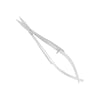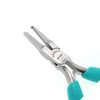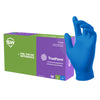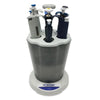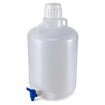- No products in the cart.
Ultimate Guide to Cryogenic Tubes and Vials
Sep
16
2022
Cryogeny is the field where material is used, transported, stored, and even produced at excessively cold temperatures. Material at these extreme temperatures can trigger some interesting chemical reactions since cooling can cause gasses to transform into a liquid or into a solid form.
Cryogenics refers to temperatures that reach -160℃ or lower. This is the temperature at which gasses begin to form into a liquid. However, the temperature required to liquefy a gas varies from one gas to another. Cryogenics is used in a variety of industries.
How Are These Low Cryogenic Temperatures Achieved?
Reaching these low temperatures depends on two main factors. One is the material that needs to be cooled and the other is the type of gas used. Some methods used to achieve cryogenic temperatures include cooling by evaporation, conduction, rapid expansion cooling, and adiabatic demagnetization.

Liquid nitrogen is also an effective cooling method due to its inert properties, it is readily available, inexpensive, its excessively low boiling temperature, and high refrigeration capacity at pressures of the atmosphere and at elevated pressures. Liquid nitrogen rapidly cools to low temperatures due to its thermal properties. It’s often used for biological material, electronic components, and for cooling food. In fact, cells stored in liquid nitrogen for up to 13 years didn’t even undergo any significant loss of cell viability.
What Are the Benefits to Cryogenic Cooling?
Cryogenic cooling is an ideal technique when a substance or material needs to be stored at optimal quality. By using cryogenics with medicine or biological material, the cooling process is very much regulated during this fast and efficient method. Both moisture loss and crystal formation are kept at a minimum during this process. Not only does cryogenics produce the best quality, but it is also much faster which saves time and it is also very cost-effective.
Are Cryogenic Tubes Real?
In biomedical and research fields, it’s important to be able to preserve organisms and living cells with optimal viability while ensuring that proteins and nucleic acids remain unchanged.
In the lab, cryogenic storage is used to preserve and store samples with liquid nitrogen. This requires special lab equipment that can tolerate excessively low temperatures without compromising the quality of the samples. Cryogenic tubes and cryogenic vials are designed to do just this. They are designed to meet the temperature demands of the liquid nitrogen.
What Are the Characteristics of Cryogenic Tubes and Vials?
Cryogenic tubes and vials have some of the same characteristics. They are both pyrogen-free and made from plastic resins such as non-mutagenic and non-cytotoxic. They both have caps that screw on and off to ensure the tops stay on during air pressure and temperature changes. They are both available with either external or internal threads. External threads help keep the sample sterile since the cap covers the outside of the tube.
Cryogenic tubes either have round or skirted bottoms while vials are sized for specific applications. Cryogenic storage tubes come with labels for identifying the tube. Vials and tubes are usually sold individually or in bulk, and in non-sterile or uncapped versions. Cryogenic vials can be autoclaved after use to minimize any risk of cross-contamination. Cryogenic vials also usually expire after five years from the date of sterilization.
Lab Pro offers a large variety of cryogenic tubes. For over 40 years, Lab Pro Inc. has been committed to delivering the highest quality cryogenic tubes, hand tools, chemicals, lab equipment, distance learning kits, lab supplies, and cleanroom PPE apparel to medical device companies and laboratories worldwide. To learn more, visit the biggest Lab Supply showroom in California, or contact us online or at 888-452-2776.














